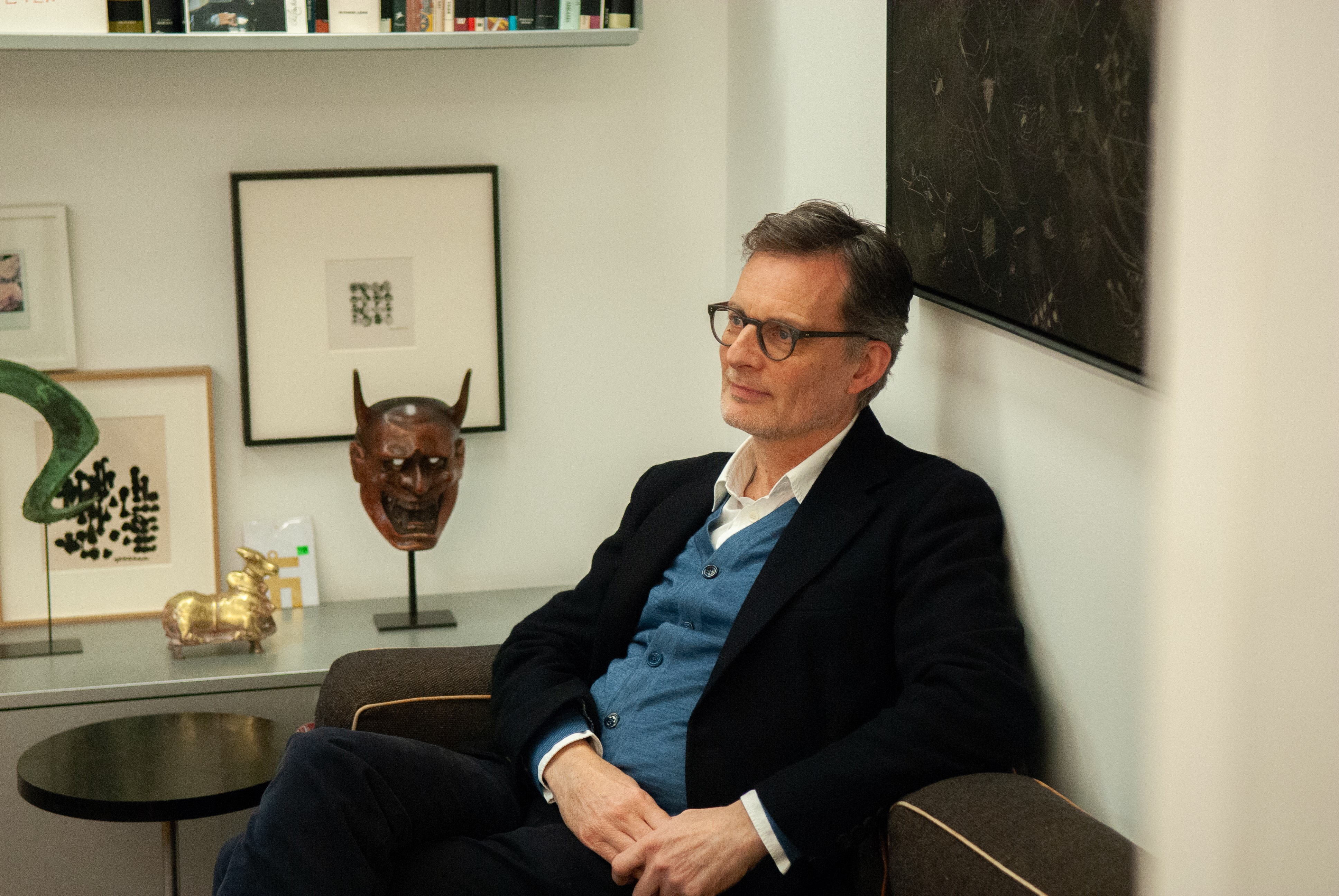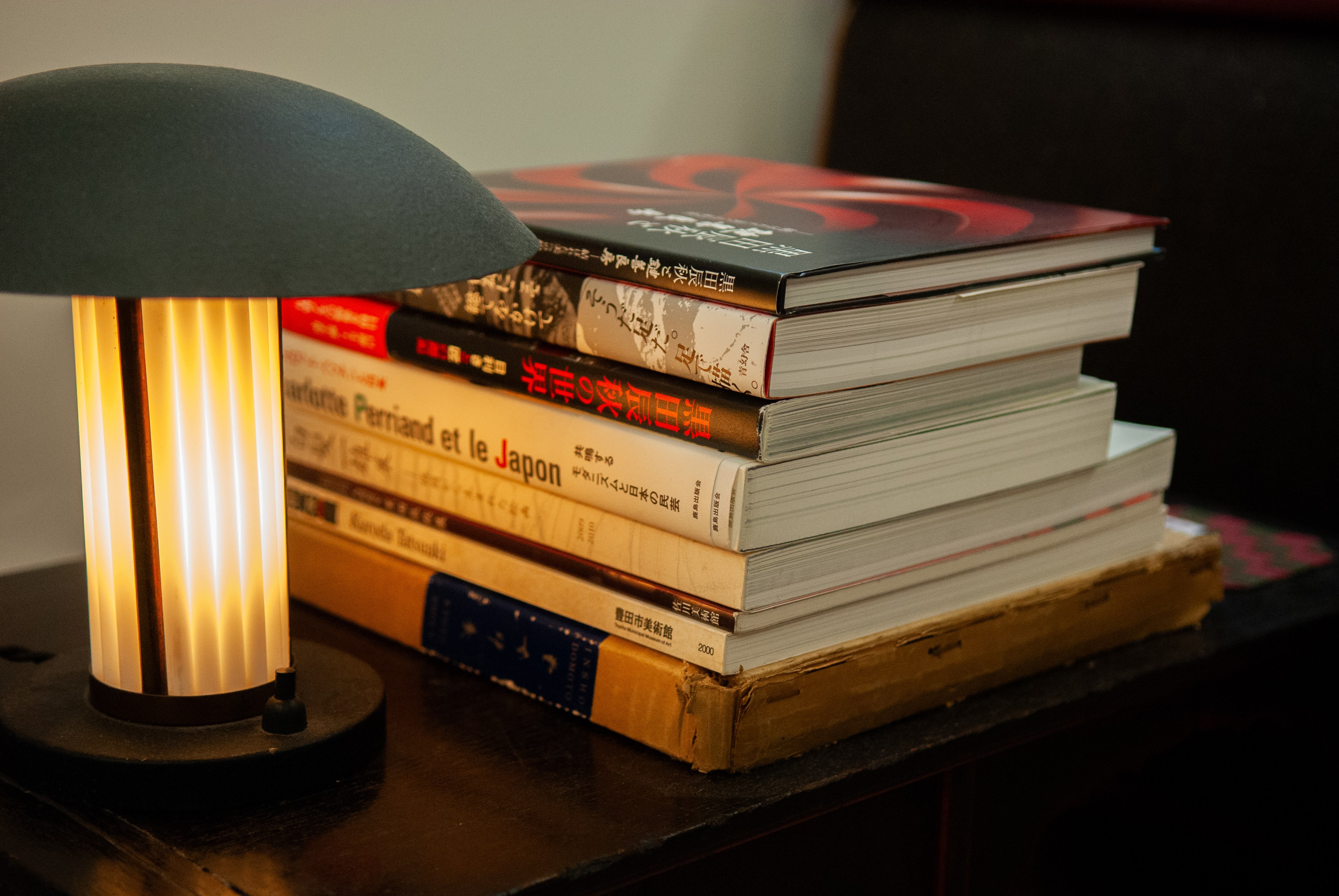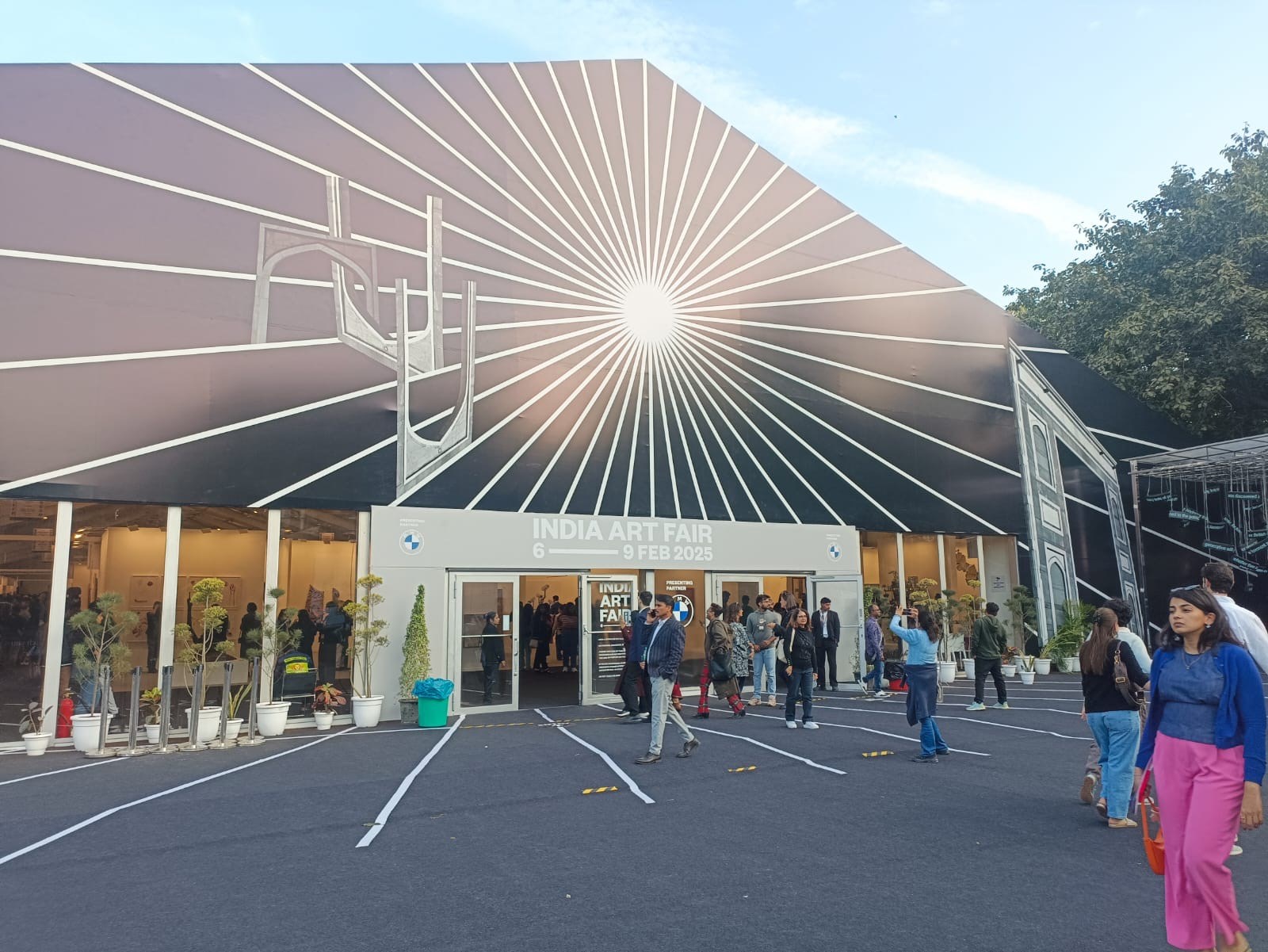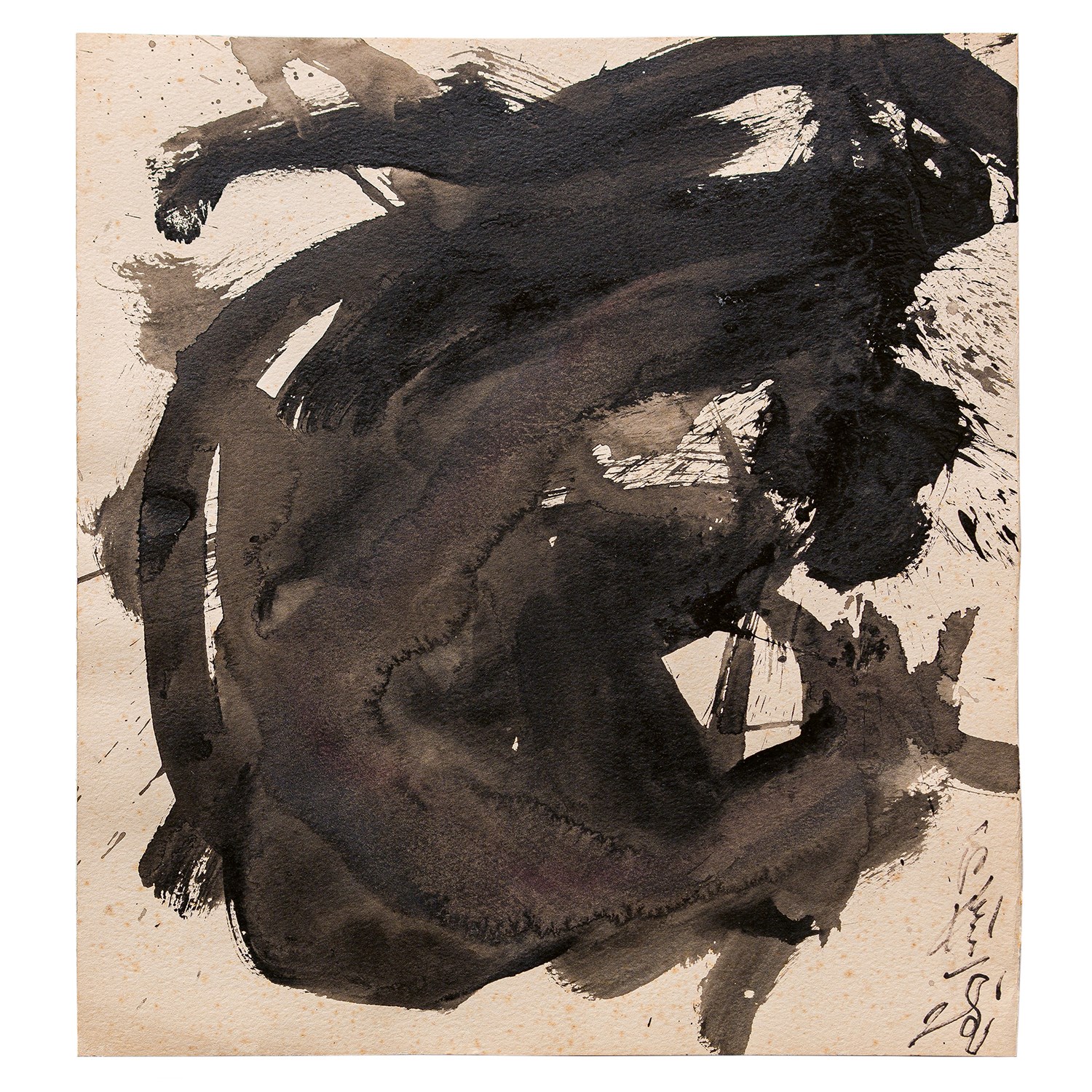A Journey Through Japanese and Indian Art
18 February 2025
ShareCatherine Milner in conversation with Joost van den Bergh
by Catherine Milner, Treasure House Fair Magazine EditorSitting in one of his set of rooms in a building situated behind Christie's in St. James's, Joost van den Bergh lounges on his sofa; his sangfroid contrasting with a fearsome looking Japanese lacquerware mask of a demon sitting on a shelf beside him. He has been immersed in the world of Far Eastern art for nearly 30 years, and is now recognised as one of the world’s leading authorities in Japanese Art Deco and decorative arts, as well as Indian ritual and Tantric art.
His journey into what is still a fairly recondite area of the art market followed a circuitous path and was not to be expected from someone who spoke not a word of Hindi or Japanese when young. "I came to London having failed at my school,” he says. But after stints at Sotheby’s and working for a Chinese art dealer he began studying paper conservation and was first alerted to what has become his abiding love ever since. “There’s something about the imagery that just clicked," says Joost. "I think it’s the intricate, finely painted small works of art that really drew me in."

Joost van den Bergh and the Japanese Hannya Mask in the background.
Brought up in the southern Netherlands, in Breda, Joost’s father, who collected French Barbizon landscapes, played a pivotal role in shaping his future. "He always took us to museums. He took me when I was three or four to one of the very first Maastricht fairs which was at that time called Pictura; I have a vague memory of that." Despite his early exposure to art, however, Joost never considered pursuing a career in the field. "I sort of rolled into it, and I think that’s a good thing. I just went with the flow,’ he says. His advice to anyone considering following a similar path is to: “Start buying and make mistakes.”
_T638754834205535123.jpg)
Hastakara yantra, Ink and gouache on paper, Rajasthan, India, 19th century. Courtesy of Joost van den Bergh.
Although he has the viewing space in which we are sitting, Joost sells most of his works through art fairs. He acknowledges the increasing importance of digital sales but remains a staunch advocate for the intimate, tangible, inspection of works. “You need to handle them; you need to really feel them,” he says. “I’ve always focused on art fairs,” he says. “I also love publishing catalogues. They allow me to have direct contact with potential buyers, and I think that personal interaction is invaluable.”

Joost’s book collection.
At the last Treasure House Fair, Joost mixed ancient Japanese bronze amphorae with contemporary Indian paintings creating a stand that was united in the purity of its aesthetics despite the disparate cultures from which it sprung. It drew in a lot of younger buyers, who are increasingly well travelled and interested in building collections of Far Eastern art. 20% of India's ultra-high-net-worth individuals are under the age of 40 and at the Indian Art Fair in Delhi in February there was a notable increased investment in Indian art of all periods and types by the young cognoscenti, according to the fair’s organisers.
 India Art Fair in Delhi. Photo by Tomasz Koclega.
India Art Fair in Delhi. Photo by Tomasz Koclega. Equally, “Japanese art is relatively speaking quite affordable” says Joost. “So it's accessible to a lot of people, as opposed to, say, Chinese art, which is already at a much higher price level.” “Take the Treasure House Fair as an example. There were a lot of dealers in Japanese art there. And we all did very different things; some selling Meiji bronzes, others selling early art. So people have a lot to choose from. And also Japan does feel like a kind of living, breathing culture that's still ongoing. The Japanese have kept their traditions in terms of very high levels of craftsmanship.” He is particularly captivated by the paintings of Shiraga Kazuo, who used his feet to paint, while hanging from ropes and was one of the leading lights of the 1950’s avant-garde Gutai movement. ‘I want to paint as though rushing around a battlefield, exerting myself to collapse from exhaustion!’ the artist said and the gusto and vim of his works is captured in a dashing black vortex of a painting hanging on the wall of Joost’s office.

Shiraga Kazuo, Gouache on paper, 1993. Courtesy of Joost van den Bergh.
Our conversation rambled onto the new European trade rules and Brexit and how it is affecting him – “we just need to get on with it,” he says pragmatically. And also onto how the Tantric art market is doing. Joost says enthusiasm for it has increased to such a point that it has become increasingly hard to find good pieces. "I think both knowledgeable and non-knowledgeable buyers are drawn to these works,” he says. “When I first saw them, I was just bowled over by their complexity and beauty. Then, as I began studying them, I realised there’s a whole philosophical depth. My favourite pieces are the ones we don’t quite know the meaning of. There are several of those. They’re beautiful because they’re mysterious."
Photos by Michalina Maria Franasik

